Photographers who make images of concrete structures and modernist architecture are a rare breed, although the genre is growing steadily.
Brutal
Brutalism is an architectural style or era where modernist style buildings often consisting of concrete, metal and glass. The structures are often considered as eyesores by the majority of the population but are developed thoughtfully and carefully by experienced individual or groups of designers.
The buildings at Dudley Zoo that I have photographed for this years project based around the exhibition title “The Matter Of The Black Country” were built in 1936-1937 by the Tecton Group and Berthold Lubetkin.

History
According to Clement (2018) Modernist building techniques emerged at the end of the 19th century and some of the early practitioners such as Le Corbusier were involved in using new materials developed as part of the continuation of the industrial revolution. Early 20th century Britain started seeing more modernist buildings springing up in the 1920. Le Corbusier was instrumental in influencing many others, including Lubetkin and another hero of modernism, Erno Goldfinger and these designers moved to Britain to practice their art and created some wonderful architecture, much of it still in evidence today.
Lubetkin, Tecton and many other immigrants’ ideas were based around the socialist philosophy developed from their backgrounds in Eastern Europe and this drove some of their use of non-linear ideas, such as circles, curves and spirals. I’m not an architecture student and I can’t begin to explain the myriad of differences between Lubetkin’s views and those of his Western contemporaries. Needless to say though, that there were some immeasurable differences that would slowly see Western designers taking on some of these ideas.
My Practice
As well as the Modernist architecture in Dudley Zoo, I have previously travelled to make images of other well known modernist structures such as those at University Of Leeds, Brunel University, Trellick Tower, Balfron Tower, Preston Bus Station, Arlington House (Margate), Forton Services, National Theatre, George Wallis Building (Wolverhampton), Barbican Estate, Alexandra Road Estate, Blackpool Police Station and even some local finds such as Shrewsbury’s Shirehall, Market Hall and Lloyds Bank. I enjoy capturing their appearances, their rough cast concrete surfaces showing the wooden shuttering board pattern, the steel, wood and glass components that make them stand out against the original and reproduction Georgian, Victorian and Edwardian structures.






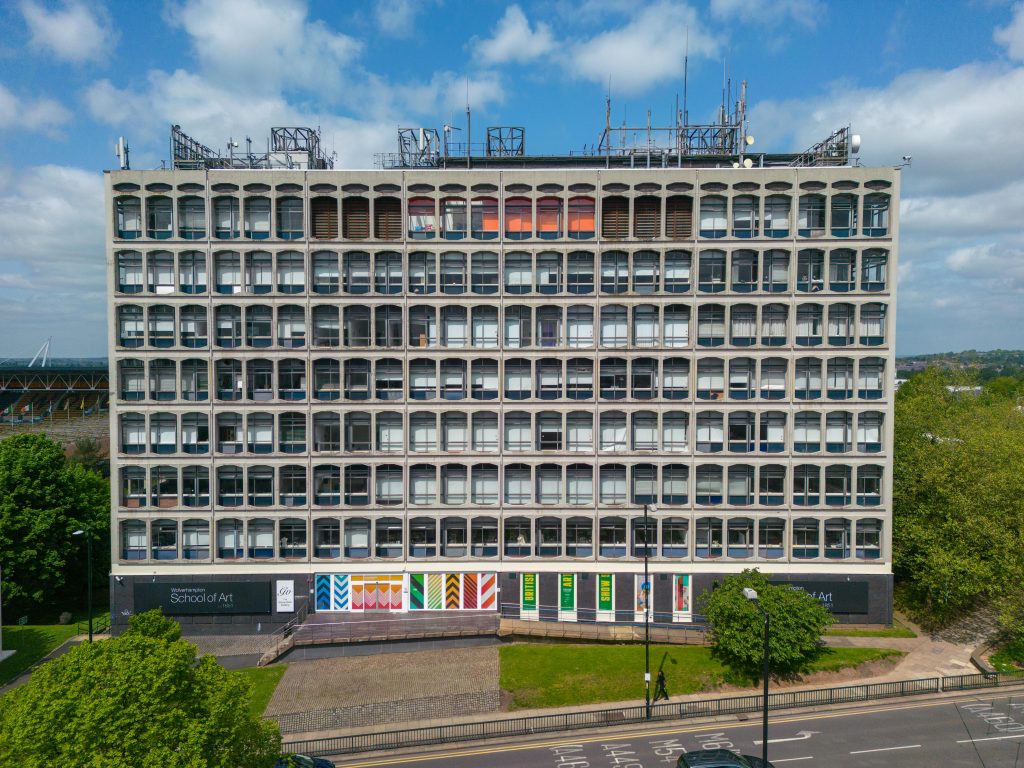

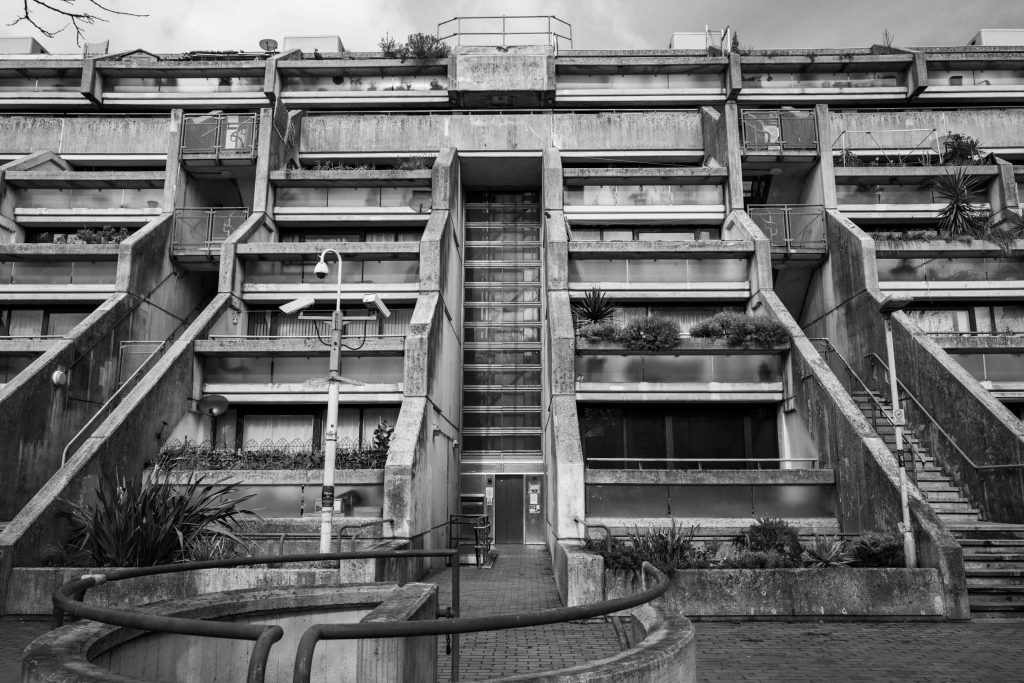
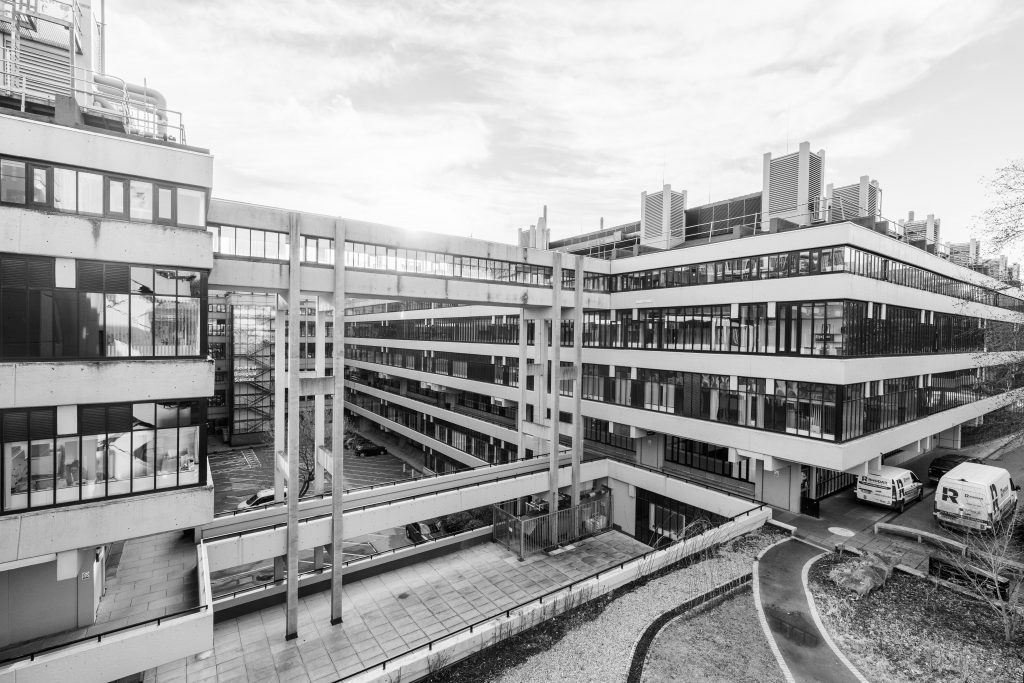
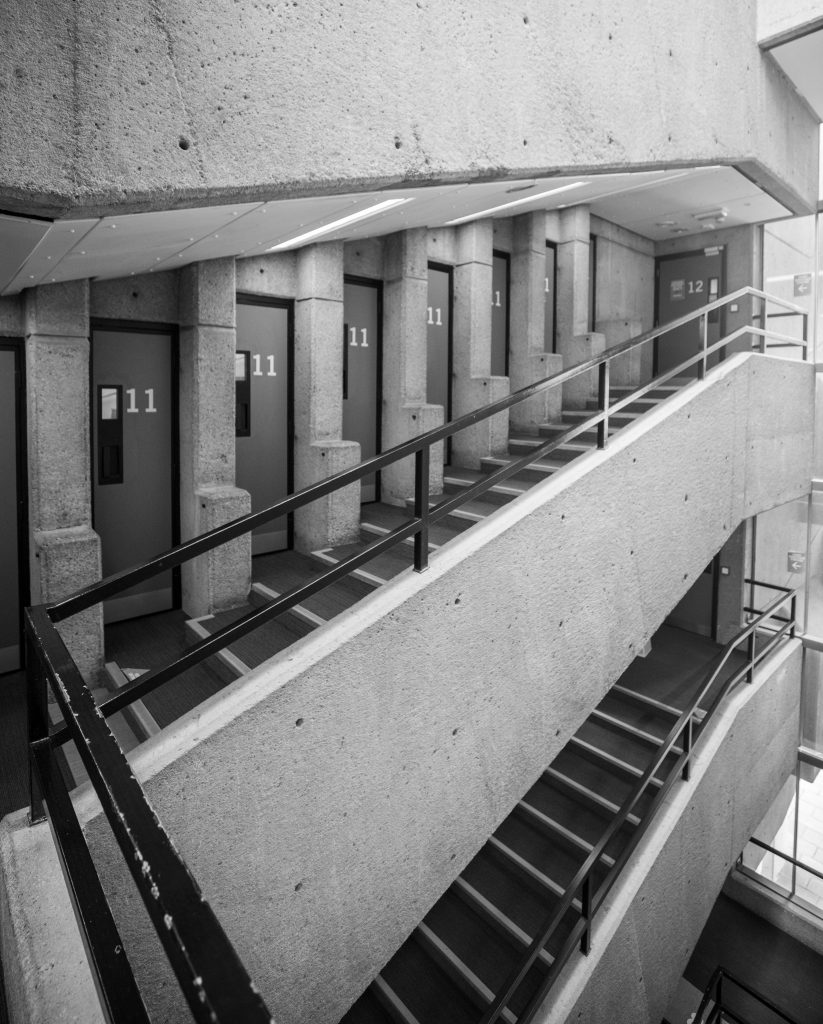
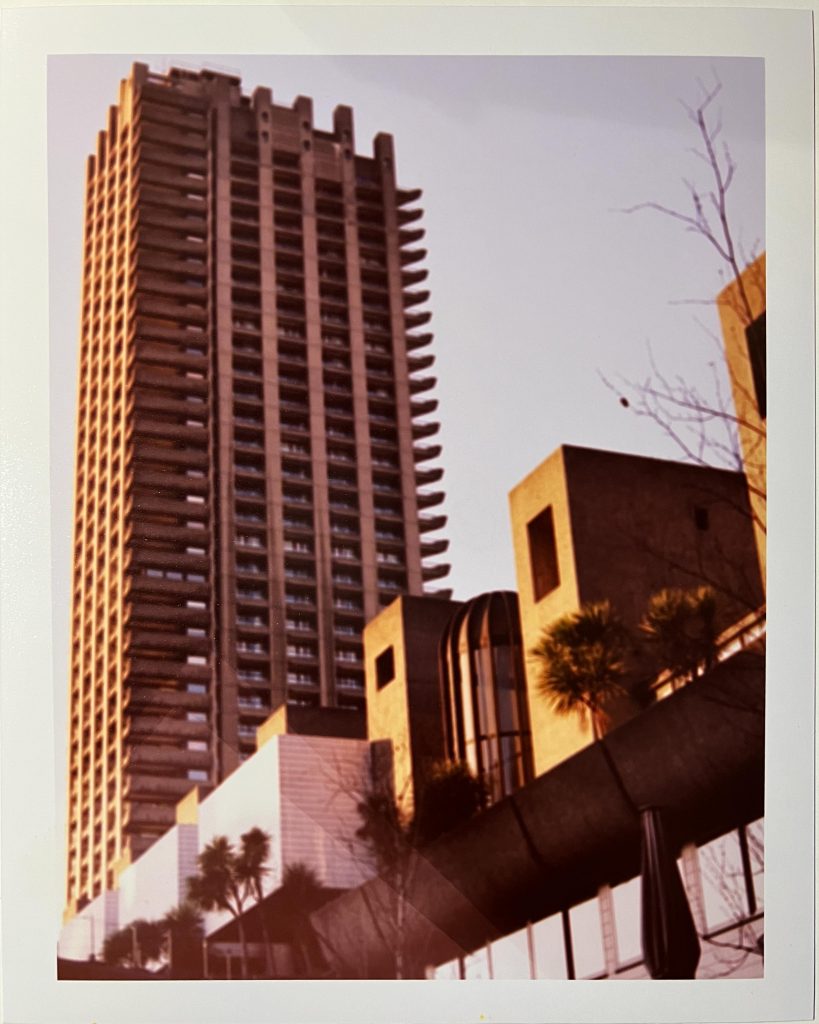
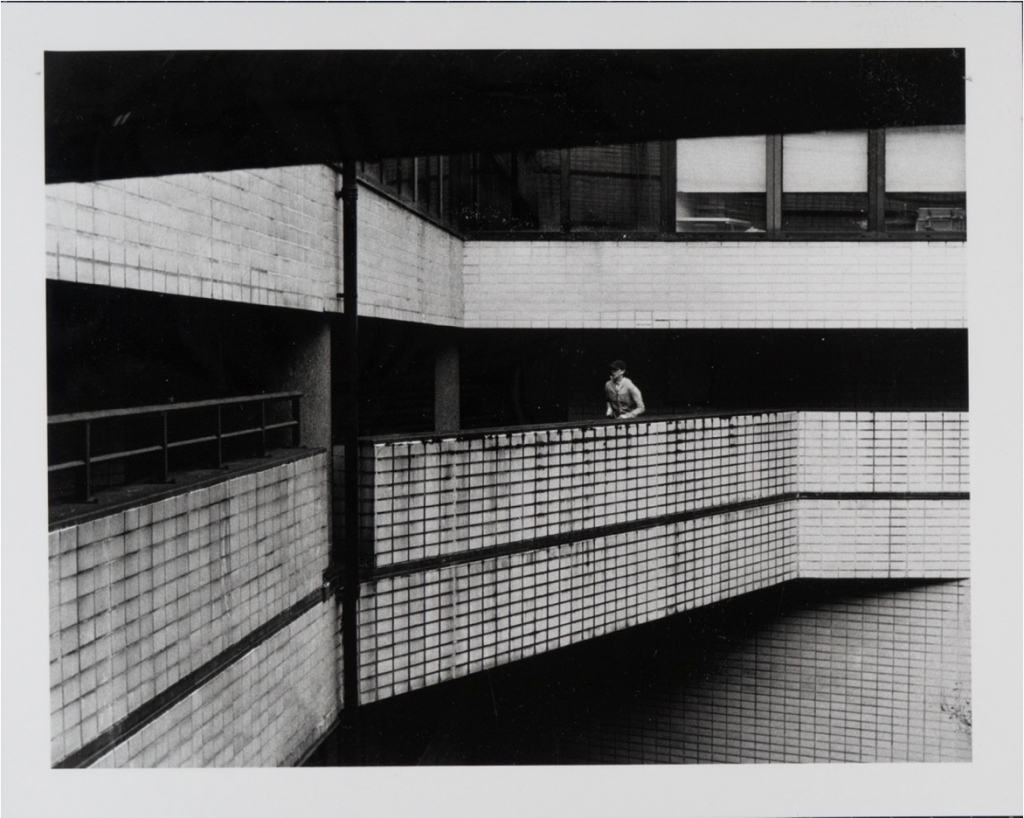
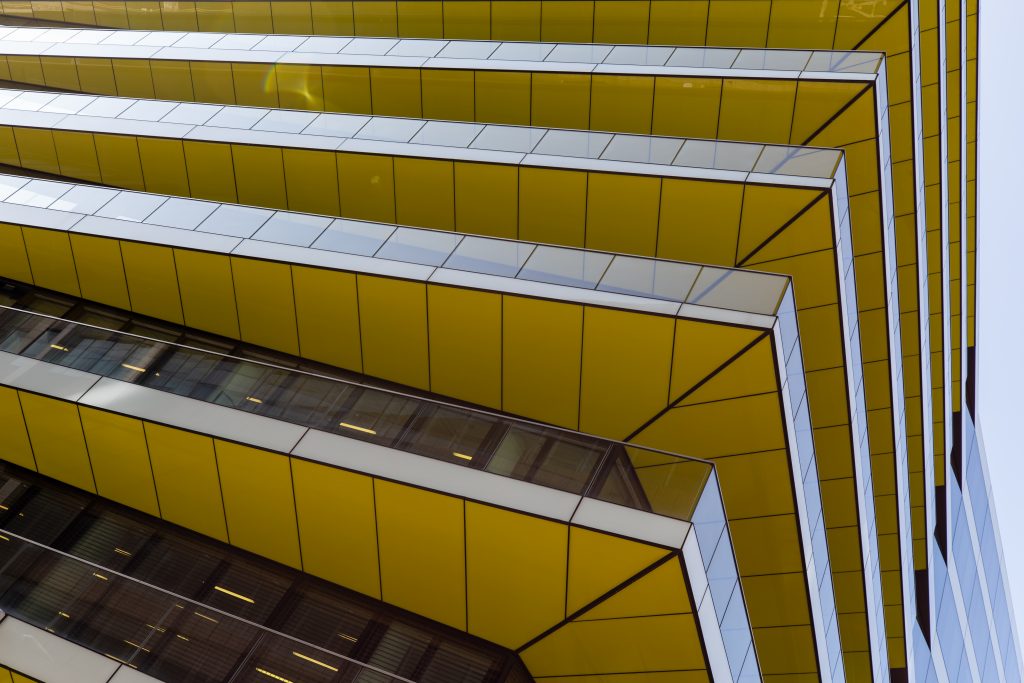
Inspirations
Looking at Instagram and YouTube there are many other Brutalism and Modernism fans. There is even a society called The Modernist Society that celebrates all forms of Modernist architecture and design ethics. There are many photographers referenced in the quarterly magazines produced by the society, some shooting more than one feature or several over the course of a few issues.
A book I used in the previous years study is Concretopia by John Grindrod who explains much of the history of the architectural style. Grindrod is the photographer of most of the images in the book and has travelled extensively to capture the material for his excellent tome.
One of the books on my shelf at home is Brutalist Britain by Elain Harwood, published in 2022 by the 20th Century Society taking the reader on a tour of some of the famous brutalist buildings around the nation and most of the photographs within are made by Harwood herself. There are a number of other photographers credited in the rear of the book but only one or two mentioned more than once. It appears that these other photos might be archive images from Getty or Alamy stock sites due to the actual location not being in existence any longer. Mostly colour photographs, some shots show a wide view of the building in isolation sometimes showing it’s contextual surroundings. Then other images are abstracts or close up details of the buildings and their decorative elements or peculiar features that stand out. Harwood, really an architectural historian, attended an exhibition featuring the works of Lubetkin and other modernist designers in 1979 in Bristol and was greatly influenced by the movement.

A 2020 book published by September Publishing titled Brutal North features a tour of Northern England with photographs by Phipps accompanying his text. The photos in this book are all black and white and this is the same as his website where he has catalogued hundreds of buildings all featuring the modernist/brutalist style. It’s an impressive collection of photography and it is also good to see that there are many images shot from low down with the converging verticals being left for the reader to deal with, possibly to. allow a grasping of the sense of scale of the building. Phipps is without doubt a great photographer of these structures often maligned and misunderstood by the general public. His Instagram channel New Brutalism shows many of the photographs he has collected over the years.

A book from the Harrison Library Lubetkin and Tecton: Architecture and Social Commitment by Peter Coe and Malcolm Reading in 1981 discusses the work of the architect team behind Dudley Zoo, containing three essays around the ideology, politics and the practice of the Tecton group. It also features many images of the works around the world that they were involved with, starting with Lubetkin’s Student Projects in 1920all the way up to the 1948 design of Peterlee New Town that did not actually come to pass. The photos in this book are a mixture of images captured especially for the book and some from historical sources wither from the design documents and locale imagery or from sources that have pictures before the destruction or alteration of the buildings. In the photographic credit section there is a mention that some sources could not be determined, but in the Photographic Sources section on page 202 there is a list of suppliers of the imagery. Lubetkin himself is the primary resource for the majority of the images in the book but there are a number of other organisations that are credited, with very few individual photographers mentioned. It appears that there might be no single or couple of photographers that are responsible for artistic shots of this type of architecture. This lack of a couple of well known figureheads as you might see in the realms of fashion, war or portraiture photography makes it difficult to track down a source of this type of photography.

Von Sternberg
One photographer who appears to be more well known that some of the others I found is Morley Von Sternberg, whom I discovered had taken the photographs for a book called Berthold Lubetkin by John Allan, published by Merrell Publishing in 2002. I borrowed the book from the Harrison Library as it has information on the Dudley Zoo Tecton buildings within its pages. Through the notes in the book I found that there was also a Penguin Pool that was demolished in 1979. According to the Dudley Zoo Tecton website, “The salt water in the pool had reacted with the steel reinforcement in the building’s concrete, causing extensive corrosion.”
Von Sternberg is a highly respected and award winning Architectural photographer who has an Instagram presence and works for the Royal Institute of British Architects (RIBA) often to capture images for RIBA awards such as the Stirling Prize. His imagery in this Lubetkin book is mainly in colour and captures the essence of each of the buildings he has photographed with some closer in images showing details, as per Harwoods contributions to her book mentioned above. He spends some time inside and outside the buildings he’s capturing and documents in a way that utilises his architectural education to document the important features of the buildings and structures. I’m not an architect so might miss some of the important details of the buildings that I photograph, but I do find myself challenged to figure out how a building feature works and why it may have been designed that way. I’ve an engineering background so like to mentally deconstruct machines and structures to figure out how they work.

Von Sternberg’s images are less challenged by converging verticals as he must have had a higher position for some photos or used a special tilt shift lens, or maybe even manipulation in post processing. They capture the buildings in their actuality with less visual poetry than some of the other people I follow on Instagram but he does also have some wonderful pictures of details in buildings. The Lubetkin book for instance has many photos of staircases from underneath or over the top. I like his style of photography a great deal but it feels more like someone taking photos for a letting agent’s website or commissioned for an architectural organisation rather than artistic. Don’t get me wrong, I do think they are great pieces of art, just not as arty as some other photographers.
Hervé
Lucien Herve is a photographer who also captures some wonderful architectural images. Often abstract details of a larger subject he has a wonderfully artistic eye and I recently bought a book from eBay called Lucien Herve by Olivier Beer published in 2001 and it contains some amazing photos of works by many architects, one of whom he worked closely with being Le Corbusier. The photos are of many places around the world and are very inspirational to me, as he likes to play with shadows and light filling the space that he is in, often catching people transiting a space to provide some sense of scale. I do not usually include people in my photographs of architecture unless it is to point out the scale or to capture movement through the structure. The book is not all modernist architecture but he was responsible for photographing all of Le Corbusier’s buildings between 1949 and 1965 so features an awful lot of relevant content for me. Some truly amazing images in this book, shame it is all in German though so difficult to read without the use of Google Translate.

Another group of Brutalist Architecture fans are SpacePlay, a small business that sells concrete models and prints of famous concrete and brutalist buildings to the general public. I’ve had the pleasure of joining them as a volunteer on an Easter Egg Hunt at the University Of Wolverhampton School of Art where I am currently studying. I have a post on that day here.

They capture images of buildings from all around the world and share them on Instagram or creating photographic prints. Their concrete models are designed and created by hand using 3D printing and then creating moulds and pouring in concrete. I’ve got a couple of their models as you can see in the post mentioned above. They seem to employ a more artistic approach to their photography and I enjoy their work immensely. Angles they use to capture images are not the sort that Von Sternebrg might normally employ either which gives them a unique perspective of the structure in question. I too like to capture images of the strange angles of buildings, I like to find hidden details in the underneath of overhangs for example, such as the underside of the National Theatre over the outdoor bar area.

I also reference the book Brutalism : Post-War British Architecture, by Alexander Clement as there are many images of this type of architecture within it’s pages. Many of the photos inside the book are made by Clement but there are many other photographers mentioned too, none of whom I have come across already. I suppose in a way it highlights that there are more photographers out there capturing images of concrete buildings etc but there are few stars of the genre. Many of the photos are attributed to organisations too who must hire staff photographers and then don’t necessarily have to give the credit for the photos.

Another instagram account I follow is that of https://www.instagram.com/brutal_architecture started by Steve (also known as fasthog) (https://www.instagram.com/thefasthog/)
This account on instagram publishes other peoples work as well as the author’s own photographs and is a central repository of images that show the range of this style of architecture around the globe. Some images are Von Sternberg-like and others more abstract and arty. It provides a great resource of places to visit when in a certain area of the country on a journey, holiday or errand for work. There is a good mix of the images shared on here and it never feels stale to me, the images

Similar to brutal_architecture, the account ConcreteBodies https://www.instagram.com/concretebodies provides photographs of locations and buildings that feature concrete. Car Parks and Tower blocks feature alongside other modernist houses, schools, theatres , civic buildings, factories and public locations. It’s another wonderful place to gain inspiration from and they’re not always bothered about the technical side being perfect, with the converging verticals in many images working to the advantage.

Hepher
As part of writing this post and research up I came across David Hepher. An artist who paints large format realistic depictions of tower blocks, generic and non-descript unlike some artworks showing famous buildings as I’ve talked about above. His work is fantastic and the level of detail in them is simply awesome. he uses textured paint to build up layers and create the texture of the building that we’re looking at. From a short distance away you’d be forgiven for thinking it is a photograph but some of his work also employs collage techniques in which he abstracts parts of scenes and intersperses them with graffiti or other text and objects.
I have never heard of his work before but will spend some time looking further into it, one piece of his work titled Camberwell Flats by Night, 1983 reminds me hugely of Rut Blees Luxemburg’s Towering Inferno that was used on an album cover in the early 2000s.

This wonderful painting is 2.6m x 2m in dimensions and shows off some really natural lighting, even getting the depth from the corridors and the perspective to make it appear very real. To me, the building in the foreground is a contrast to the main tower block and it takes me out of the image aas it doesn’t look as detailed or as real as the main building. It is a wonderful image though, the orange lights through the curtains remind me of a time when I was younger and lived in a three storey terrace and the windows in the buildings were always lit like this at night. Even the areas on the walkways where there is no light, the shadows and darkness creating an eerie sense of foreboding.
Brooke
After I had written most of this post I was looking on YouTube at something else and the algorithm sent something my way and it was a video channel by an architectural photographer. Steven Brooke has many videos detailing the correct ways to photograph buildings and landscapes around architecture, at different times of the day and night. Compositional elements and their importance are especially focussed on in the videos and even some explanation as to the Tilt-Shift lenses that he uses. He calls them Perspective Controlling Lenses.

Summary
I suppose what I’m trying to document with this research is that there are fewer super famous people in this genre of photography than others. Some photographers I have come across during the course of researching architectural photographers include:
Berenice Abbott, Eugène Atget, James Austin, Iwan Baan, Bernd and Hilla Becher, Hélène Binet, Bill Hedrich, Hedrich Blessing Photographers, Jack Boucher, Sergio Castiglione, Phyllis Dearborn, Frederick H. Evans, Lucien Hervé , Carol M. Highsmith, Candida Höfer, Julien Lanoo, Bedford Lemere, Eric de Maré, Robert J. Massar, Duccio Malagamba, Lucia Moholy, Andrew Prokos, Tim Rawle, Julius Shulman, Wolfgang Sievers, G. E. Kidder Smith, Ezra Stoller, Wayne Thom, Pierre Trémaux and Iwao Yamawaki
Most architectural photography seems to not be aimed at the “art” world. It appears to be targeted at design and construction firms, advertising, non-fiction books and many other applications. After a photographer has made a name for themself in the field whilst carrying out commissions or working for an organisation it appears that they can then consider the art world or be considered by the art world. the Bechers have been mentioned to us in the course of the last 3.5 years and their typologies have a world wide recognition. It has bled across into art at some point and is considered to be a high form by many.
the photos I have made of Dudley Zoo for the exhibition are not the standard type of architectural photograph that I have seen in the research. Not least because I have chosen to use a Redscale film for a look to the final images that might hint at the fire and murky sky caused by the industrial revolution in the Black Country. Another reason is that the photos do not show the whole of any particular structure, they are more abstract shots. The two with the more geometric abstract views are meant to remind people of the architecture of the zoo that they might have faint memories of from when they were children.



I chose not to use the wider angle shots as they are a little “factual” and don’t feel to me as if they are a link to the emotional location. My hope is that the oddness of the shape and the colour might cause some latent nostalgia to surface in the guests to the exhibition.
During the research I have discovered much advice on the nest way to capture architectural images and how to compose them correctly with the specific formula and methods that are industry standard. I am not industry standard and I’m not overly concerned as to whether my photographs might make it into a book on Tecton architecture, Dudley Zoo or the Black Country. I just like to make photographs that I like. If I was being commissioned by the Dudley authorities then maybe I would ask if they wanted standard architectural photos or something more aligned to my practice.
Be First to Comment